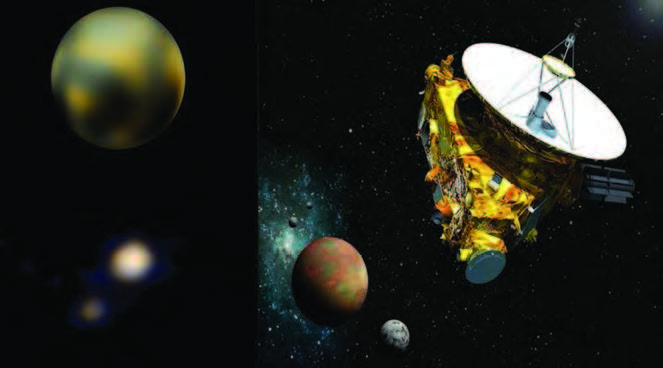
WASHINGTON (TIP): NASA‘s New Horizons spacecraft, set to fly by the Pluto system on July 14, has sent its first color image of the dwarf planet and its largest moon Charon.
“The image reveals tantalising glimpses of this system,” Jim Green, director of NASA’s Planetary Science Division, said in a statement.
Charon is seen dimmer than Pluto in the image taken from a distance of 115 million km.
“The contrast may be due to a difference in composition of the two bodies or it could even be caused by a previously unseen atmosphere on Charon,” Green added.
The uncertainty should clear up this summer when New Horizons gets history’s first good look at the two frigid, faraway objects.
“We are going to Pluto because it is the human race’s first opportunity to study an entirely new class of world,” added William McKinnon, New Horizons co-investigator from the Washington University in St. Louis.
Till date, astronomers knew about only one moon of Pluto called Charon which is nearly 50 percent as wide as the dwarf planet.
Exactly 85 years after Pluto’s discovery, New Horizons has now spotted small moons orbiting Pluto.
The moons, Nix and Hydra, are visible in a series of images taken by the New Horizons spacecraft at distances ranging from about 201 to 186 million km.
The long-exposure images offer New Horizons’ best view yet of these two small moons circling Pluto which professor Clyde Tombaugh discovered at the Lowell Observatory in Flagstaff, Arizona Feb 18, 1930.
Nix and Hydra were discovered by New Horizons team members in Hubble Space Telescope images taken in 2005.
Hydra, Pluto’s outermost known moon, orbits Pluto every 38 days at a distance of approximately 64,700 km while Nix orbits every 25 days at a distance of 48,700 km.
Pluto’s two other small moons, Styx and Kerberos, are still smaller and too faint to be seen by New Horizons at its current range to Pluto.
There may be yet more moons waiting to be discovered, as well as a ring system or debris fields around Pluto.
Such features could present a collision risk to New Horizons but mission team members are not too concerned, Space.com reported.





Be the first to comment